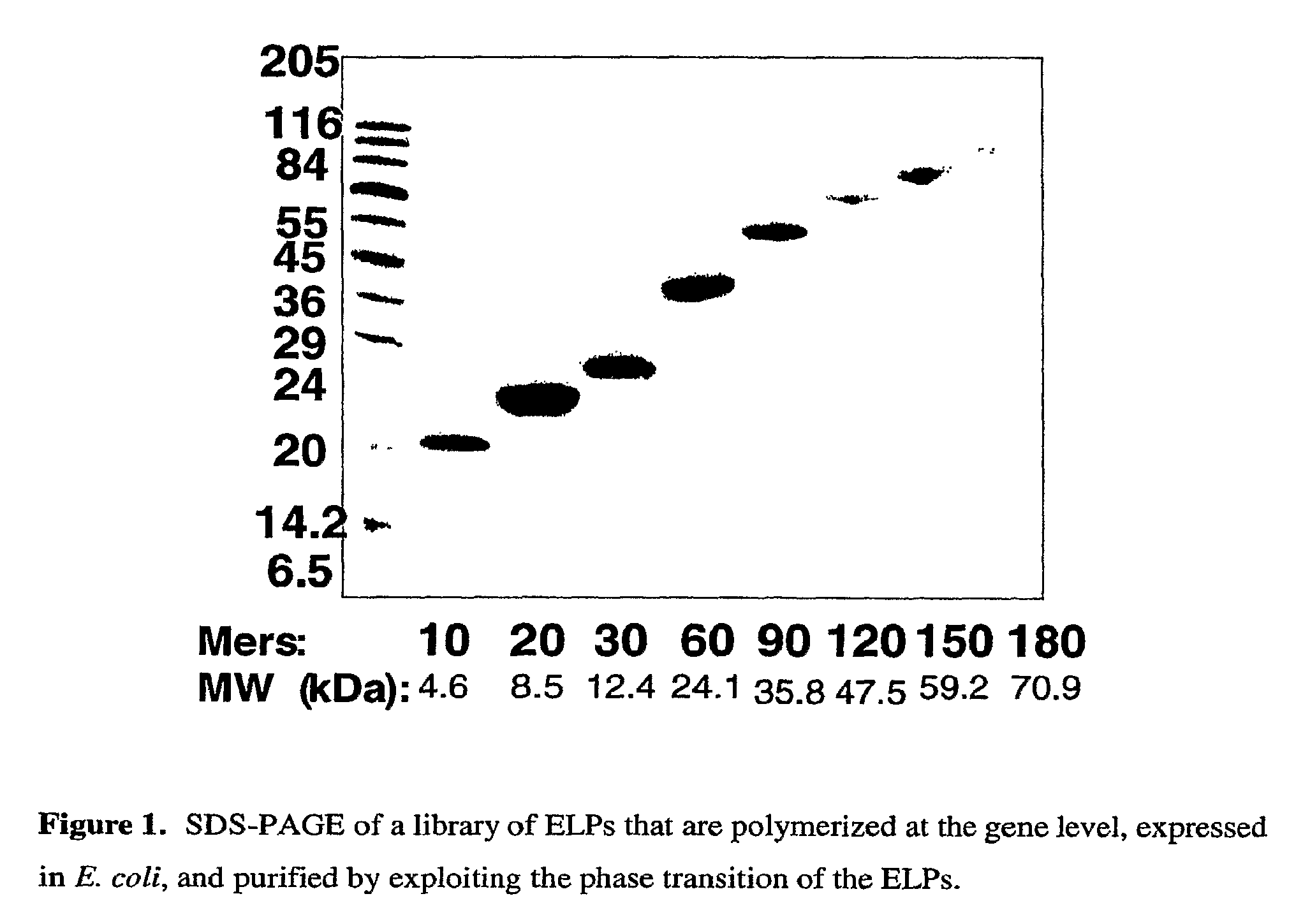Methods and compositions for delivering active agents with enhanced pharmacological properties
a technology of enhancing pharmacological properties and active agents, which is applied in the direction of drug compositions, medical preparations, peptides, etc., can solve the problems of low bioavailability of active compounds, insufficient or unsatisfactory in vivo efficacy, and insufficient in vivo efficacy, so as to enhance the in vivo efficacy of active agents
- Summary
- Abstract
- Description
- Claims
- Application Information
AI Technical Summary
Benefits of technology
Problems solved by technology
Method used
Image
Examples
examples
[0074]Synthesis and Characterization of ELPs. ELPs are typically prepared by a recombinant synthesis in E. coli. However, other hosts may be used for recombinant synthesis as well. ELP may also be prepared by a chemical synthesis. In a typical example of a recombinant synthesis, the polymerization process is carried out at the gene level by a method called recursive directional ligation (RDL), in which a synthetic gene for a repeat sequence for the ELP (typically encoding ˜10 pentapeptides of VPGXG (SEQ ID NO.: 1)) are ligated in a head-to-tail manner recursively. After n rounds of ligation into a plasmid, this provides a library of n+1 ELP genes, all of which encode the same peptide sequence, but with MWs that are multiples of the drug.
[0075]ELP-drug conjugation. An ELP containing a unique C-terminal cysteine residue is synthesized and purified by inverse transition cycling (ITC) and conjugated to Doxorubicin molecules through four different pH-sensitive, maleimide-activated, hydra...
PUM
| Property | Measurement | Unit |
|---|---|---|
| Transition temperature | aaaaa | aaaaa |
Abstract
Description
Claims
Application Information
 Login to View More
Login to View More - R&D
- Intellectual Property
- Life Sciences
- Materials
- Tech Scout
- Unparalleled Data Quality
- Higher Quality Content
- 60% Fewer Hallucinations
Browse by: Latest US Patents, China's latest patents, Technical Efficacy Thesaurus, Application Domain, Technology Topic, Popular Technical Reports.
© 2025 PatSnap. All rights reserved.Legal|Privacy policy|Modern Slavery Act Transparency Statement|Sitemap|About US| Contact US: help@patsnap.com



